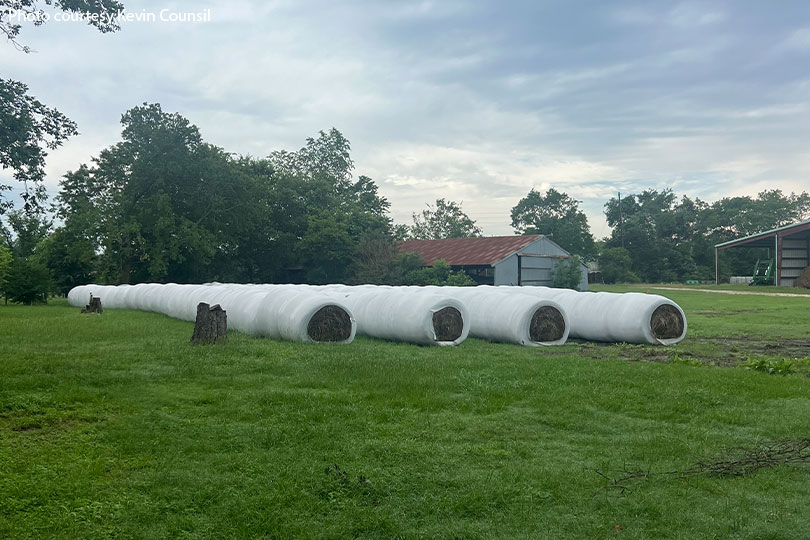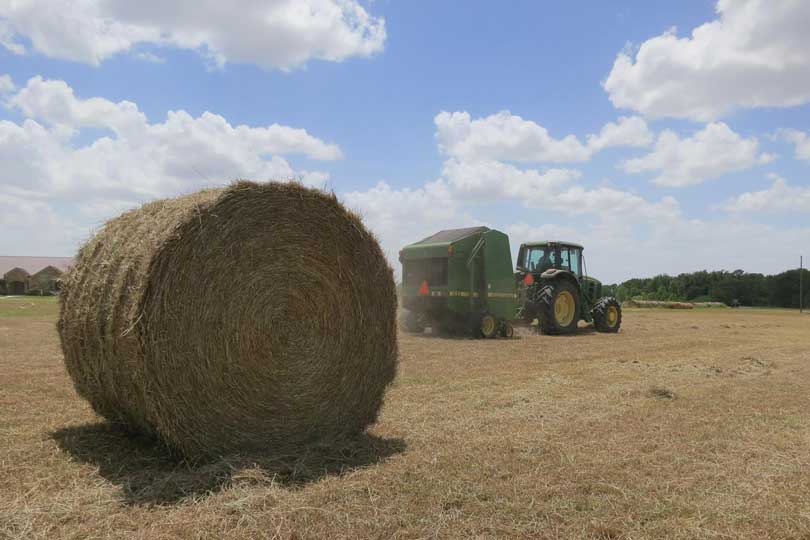By Shelby Shank
Field Editor
The start of hay season in much of Texas is facing delays after excessive rainfall.
Early rains looked promising, but ranchers like Kevin Counsil in Madisonville are pushing back their timeline to cut hay.
“We had two short windows where some people were able to get a little hay cut,” he said. “But those were narrow windows, and then the rains came back.”
In recent weeks, Counsil’s area has received anywhere from 23 to 25 inches of rain.
“If it stops raining now, it’ll be at least two weeks before we can get in the field because we need it to dry out,” he said. “It seems like we get a window of a few days, and it starts drying up enough. Then, it starts raining again.”
While the rainfall is needed after years of drought, too much of a good thing can become a bad thing.
“There could still be a hay shortage, even though as wet as it is right now and it looks like everything is fantastic,” Counsil said.
Hay supplies
The U.S. Department of Agriculture’s records showed national hay inventories last summer hit the lowest levels since 1974.
Farmers and ranchers like Counsil need to stockpile some hay this year in order to replenish their stocks.
Counsil tries to have at least a year’s worth of hay on hand in case of another drought or emergency.
“I try to stay stocked at all times, and even though as dry as we were last year and hay supplies were tight, I came out of the winter with almost 400 rolls of hay left in the barns from the previous years,” he said.
Input costs
Although fertilizer costs are still high, they have dropped about 20%-30% compared to prices from two years ago, according to Texas A&M AgriLife Extension.
Ammonium nitrate has dropped to about $530 per ton, and ammonium sulfate is around $490 per ton.
“Before you spend the money on fertilizer, it’s always recommended to conduct a soil test and see exactly what nutrients the forage needs,” Tracy Tomascik, Texas Farm Bureau associate director of Commodity and Regulatory Activities, said.
Hay prices
The lower hay inventories and increased input costs are still driving prices higher.
Round bale prices range between $95 per bale up to $120 per bale.
“Inflation has driven up the cost of growing and cutting hay, and we can expect prices to stay higher than average while there is still less hay available,” Tomascik said. “If another drought follows this wet spring, that will only increase prices more.”
Hay outlook
The rainfall is appreciated, despite its pushbacks, but Counsil remains positive about this year’s hay season.
“When we’ve had this much rain and the ponds are full and cattle prices are high, you can’t say that it’s a bad year,” Counsil said. “I’m going to say the outlook right now is going to be good and is definitely much better than it would be if we only had one or two inches of rain this year.”



Leave A Comment